#rahiolisaurus
Explore tagged Tumblr posts
Text
Post # 138
Desi dinosaurs!
Whenever I read the tagline from Steven Spielberg's movie Jurassic Park - "when Dinosaurs ruled the world", I wondered, did they also rule India? Or were these mega-predators only a western phenomenon?
Turns out, between 200 million years and 65 million years ago, more than 20 species of dinosaurs roamed across Meghalaya, Gujarat, Tamil Nadu, Madhya Pradesh and Telangana. It is believed that the largest and the last ever dinosaurs roamed in this part of the world.
Don't believe that? Read on. Because, therein lies a tale.
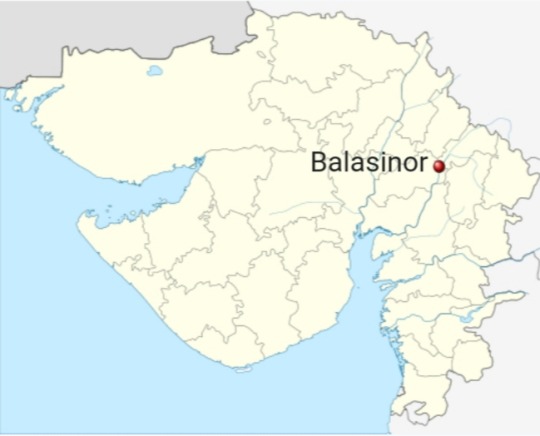
About 100 kms from Baroda (Vadodara) in Gujarat is an old, sleepy town called Balanisor. 10 km from there is a small village called Raiyoli. Once upon a time, an old woman used to live in Raiyoli. She had magical culinary skills. It was said of her, "Her curries would cure ailments, hypnotize officials, calm the angry and excite the unruffled."
Balanisor also hosted the estate of the former royal family of the 17th century Babi dynasty. The estate has now been converted into a 8-room hotel, managed by Princess Aliya Sultana Babi and her brother.
In October, 2003, young Princess Aliya was on her rounds in her estate, when she passed the old woman’s hut. An intoxicating aroma filled the air and enticed her inside. The princess found the old woman grinding spices with a odd looking mortar and pestle, then mixing them into a curry that was slowly cooking on an earthen stove. Princess Aliya borrowed the pestle from the old woman, studied it and found that it was a dinosaur egg!
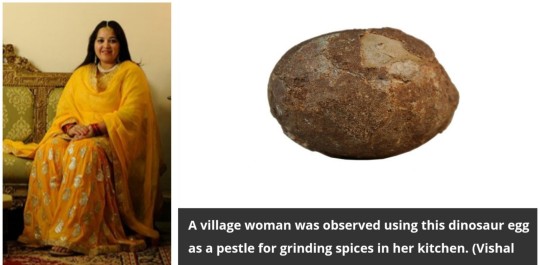
In the early 1980s, palaeontologists stumbled upon dinosaur bones and fossils during a regular geological survey of this mineral-rich area. They found dinosaur egg hatcheries and fossils of at least 13 species of dinosaurs, more than 100 million years old. It is now believed that Gujarat is home to one of the largest clutch of dinosaur hatcheries in the world. So well-protected are the fossilised eggs found here that many researchers call them the best-preserved eggs in the world after the ones found in France.
Today Balanisor hosts India's first and only Dinosaur fossil park. It is also called India's Jurassic park. Gujarat tourism officials talk about Dinosaur Tourism and Princess Aaliya, also called the Dinosaur Princess, conducts guided tours of the fossil park.
I was not aware of all of this until I read an interesting book called Quirky History. It contains a chapter on Dinosaurs that are believed to have roamed in India. I checked them out on Google and Wikipedia, and found details about a few pretty interesting breeds.

The first one is named Titanosaurus indicus, the first Indian dinosaur to be discovered, in 1828, by William Henry Sleeman, an administrator with the East India Company, at the base of the Bara Simla Hill near Jabalpur, Madhya Pradesh. This is how the bugger looked.
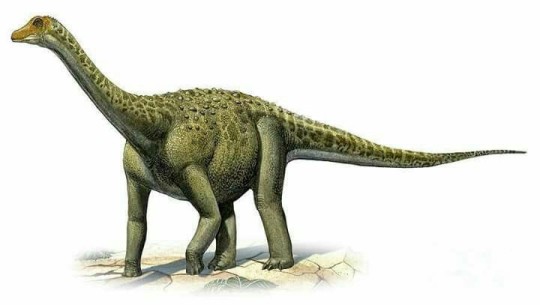
Another one was called Barapasaurus Tagorei. Bara = Big, Pa = Feet. Almost 300 bones of at least six Barapasaurus were excavated from the present day town of Pochampalli, Telangana, in 1961. Interestingly, the species’ surname, Tagorei, was chosen because the first year of fieldwork on the site at Pochampalli was carried out in the centenary year of Rabindranath Tagore’s birth.
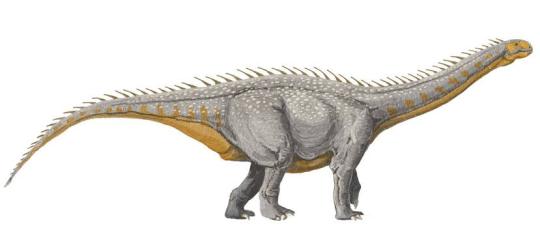
The next one is my favorite. I had a great time reading about it. I was almost ROFL. Its was called Jainosaurus. Quite like the Jains, this dinosaur was a herbivore. But that's not why it's called Jainosaurus. This dinosaur actually gets its name from the palaeontologist Sohan Lal Jain, who worked on figuring out the skull of this animal. Its fossils were also discovered near Jabalpur. The Jainosaurus is especially interesting because it is among the last dinosaur species to live on earth.

Some dinosaurs were named after the places where their fossils were discovered. For example, Jaklapallisaurus was discovered near Jaklapalli in Andhra Pradesh. You can easy guess where Jubbulpuria was found.
One was named Isisaurus, after the Indian Statistical Institute!
I swear guys, I am not making this up. Pls check it out on Google if you wish. :-)
The last one, for now, is Bruhathkayosaurus, from the Sanskrit Bruhath-kaya, which means huge-bodied. It is believed to be the largest dinosaur that ever lived. Its fossils were found in Tiruchirappalli district of Tamil Nadu.
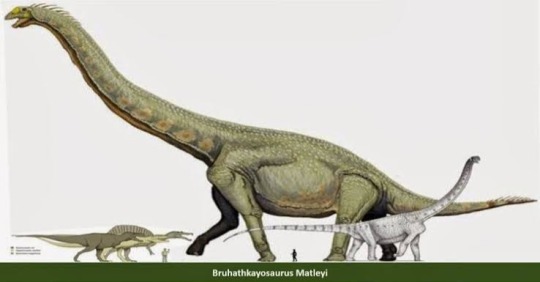
You can check out some of the other species for yourselves - Rahiolisaurus gujaratensis, Rajasaurus, Kotasaurus etc.
I will sign off with a fun fact. In Balasinor, paleontologists have found fossilized remains of a snake that dined on dinosaur eggs. A 67 million-year-old snake skeleton was found in a dinosaur nest, wrapped around a baby dinosaur.
Next time I go to Ahmedabad or Baroda, I must take time out to visit the Dinosaur Fossil Park in Balasinor.

#jurassic park#dinosaur#indian jurassic park#balanisor#raiyoli#babi dynasty#fossils#dinosaur hatcheries#dinosaur tourism#dinosaur princess#quirky history#titanosaurus indicus#barapasaurus tagorie#rabindranath tagore#pochampalli#jainosaurus#jabalpur#jaklapallisaurus#jubbulpuria#isisaurus#indian statistical institute#bruhatkayosaurus#rajasaurus#dinosaur fossil park
7 notes
·
View notes
Text
Rajasaurus narmadensis
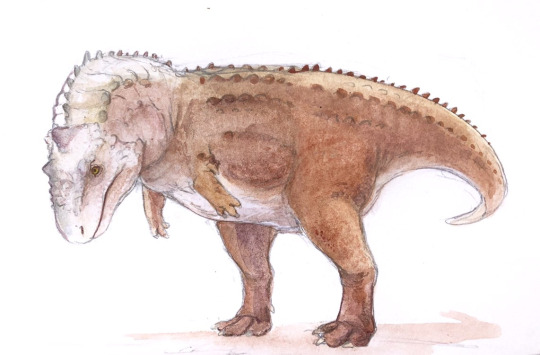
By Ripley Cook
Etymology: King Reptile
First Described By: Wilson et al., 2003
Classification: Dinosauromorpha, Dinosauriformes, Dracohors, Dinosauria, Saurischia, Eusaurischia, Theropoda, Neotheropoda, Averostra, Ceratosauria, Neoceratosauria, Abelisauroidea, Abelisauridae, Majungasaurinae
Status: Extinct
Time and Place: Between 70 and 66 million years ago, in the Maastrichtian of the Late Cretaceous


Rajasaurus is known from the Lameta Formation of Gujarat, India
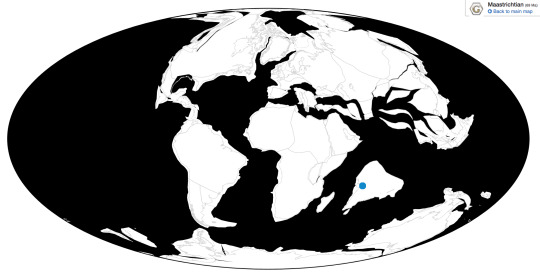
Physical Description: Rajasaurus was an Abelisaur - so, a kind of theropod with a long body, almost nonexistent arms, and thick, powerful legs. Rajasaurus in particular differed from other Abelisaurs in having particularly short legs, making it even more… sausage-like… in appearance than even its close relatives. It had a boxy head and thick neck, which would allow it to have a very powerful bite and strength in the neck to hold down prey. It had a strong sense of smell, as well, to help it to find prey from farther away - allowing it to set up an ambush for said prey when it got too close. It had horns on its forehead, made of bone from the nose, which was probably not extended by skin. It was also a lot shorter than other Abelisaurids - which means that it was only about 7 or so meters long, and maybe only two meters tall, if that. It really wouldn’t have stood much taller than an adult man. Rajasaurus had an especially short neck, which may have allowed it to grab onto prey even tighter than other Abelisaurids. It had very short, four-fingered hands, with claws on the first three of them. Though the legs of Rajasaurus are short, it did have very robust, thick toes, giving it more support on the ground. As an Abelisaurid, Rajasaurus was covered in scales all over its body, with potentially round bumpy bits of bone (osteoderms) interspersed among the scales.
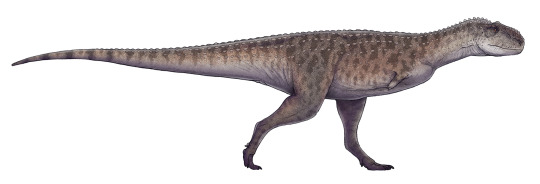
By Paleocolour, CC BY-SA 3.0
Diet: As a large Abelisaurid, Rajasaurus would have primarily fed upon larger herbivores, such as Titanosaurs.
Behavior: Abelisaurs were not the fastest animals - after all, if they ran too quicky, they wouldn’t have been very balanced - but what they were extremely agile turners. Being able to turn very quickly allowed them to be efficient ambush predators. Rajasaurus would have waited for prey to appear, and then charged - seemingly out of nowhere, by turning rapidly towards the prey - and then grabbing down onto the struggling prey with its strong, boxy jaws. Though Rajasaurus had small arms and hands, it traded those off for having a stronger neck - to better hold the prey steady with. Then, the stress would weaken the animal, along with blood loss. The horns on the head of Rajasaurus were probably for display and interaction between members of the species, with fights occurring to argue over carcasses or for mates via head-butting or neck-bashing. The horns would have also packed quite a bit of a cutting edge in these fights. It’s also possible that bright colors could have been used on the horns to display. While it doesn’t seem likely that Rajasaurus was particularly social, it did probably take care of its young, and may have formed small family groups while they grew up, in order to protect the young from the many other predators around.
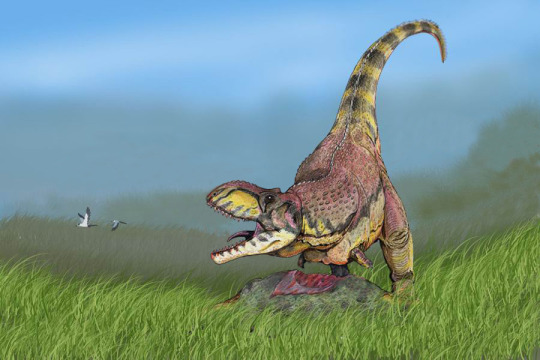
By ДиБгд, CC BY-SA 3.0
Ecosystem: The Lameta Formation is a fascinating Late Cretaceous environment due to the fact that it was a grassland! Grasses evolved sometime in the Cretaceous period. While they did not spread rapidly until the Cenozoic, they did seem to be present in quite a few areas during the Cretaceous (to the point of some hadrosaur relatives evolving to eat them). India at the time was an isolated island, so grasses were able to thrive and diversify more there than in other locations where they did not gain as immediate of a foothold. There was a large amount of volcanic activity nearby, which probably added to its extensive biodiversity (before it made many of the animals present go extinct, via the explosion of the Deccan Traps). It was a lush environment filled with grasses resembling modern rice, flowers, algae, and ferns. This was an environment filled with many lakes, surrounded by extensive mud that lead to its fossil preservation. Rajasaurus was certainly not the only dinosaur of this environment, either! There were even other Abelisaurids - Indosaurus, Indosuchus, Rahiolisaurus, Lametasaurus, and their close relatives the (potentially piscivorous) Noasaurids such as Ornithomimoides, Laevisuchus, and Dryptosauroides. There were also other theropods, probably also Ceratosaurs - Jubbulpuria, Coeluroides, and Orthogoniosaurus. With all of these predators and fishermen, it makes sense that there were a lot of large herbivores for them to feed upon! And there seem to be at least three different kinds of titanosaurs there - Titanosaurus, a dubiously known one; Jainosaurus, a slightly better known one; and Isisaurus, the best known one that seems to be one of the main features of the environment. There was also potentially an ankylosaur - Brachypodosaurus! As for non-dinosaurs, there were large snakes, Sanajeh and Madtsoia; a variety of turtles; and some Dyrosaurid crocodylomorphs!

By José Carlos Cortés
Other: Rajasaurus was one of the Majungasaurines, which had longer holes in their snouts in front of their eyes than their close relatives the Carnotaurines - aka, they had lighter skulls - and having small crests widening the front of their heads; and, in general, longer snouts. This group of Abelisuarids underwent extensive island hopping, reaching places like India via rafting and other journeys across the ocean. Rajasaurus, being one of them, had ancestors that underwent such a journey!
~ By Meig Dickson
Sources Under the Cut
Brookfield, M. E.; Sanhi, A. (1987). "Palaeoenvironments of the Lameta beds (late Cretaceous) at Jabalpur, Madhya Pradesh, India: Soils and biotas of a semi-arid alluvial plain". Cretaceous Research. 8 (1): 1–14.
Carrano, M. T.; Sampson, S. D. (2008). "The phylogeny of Ceratosauria" (PDF). Journal of Systematic Palaeontology. 6 (2): 183–236.
Cau, A., F. M. Dalla Vecchia, and M. Fabbri. 2012. Evidence of a new carcharodontosaurid from the Upper Cretaceous of Morocco. Acta Palaeontologica Polonica 57(3):661-665
Delcourt, R. (2018). "Ceratosaur Palaeobiology: New Insights on Evolution and Ecology of the Southern Rulers". Scientific Reports. 8 (9730).
Filippi, L. S., A. H. Méndez, R. D. Juárez Valieri and A. C. Garrido. 2016. A new brachyrostran with hypertrophied axial structures reveals an unexpected radiation of latest Cretaceous abelisaurids. Cretaceous Research 60:209-219
Furtado, M. R., C. R. A. Candeiro, and L. P. Bergqvist. 2013. Teeth of Abelisauridae and Carcharodontosauridae cf. (Theropoda, Dinosauria) from the Campanian- Maastrichtian Presidente Prudente Formation (southwestern São Paulo State, Brazil). Estudios Geológicos 69(1):105-114
Gianechini, F. A., S. Apestteguia, W. Landini, F. Finotti, R. J. Valieri and F. Zandonai. 2015. New abelisaurid remains from the Anacleto Formation (Upper Cretaceous), Patagonia, Argentina. Cretaceous Research 54:1-16
Grillo, O. N.; Delcourt, R. (2016). "Allometry and body length of abelisauroid theropods: Pycnonemosaurus nevesi is the new king". Cretaceous Research. 69: 71–89.
Kapur, V. V.; Khosla, A. (2016). "Late Cretaceous terrestrial biota from India with special reference to vertebrates and their implications for biogeographic connections". Cretaceous Period: Biotic Diversity and Biogeography. 71: 161–172.
Mohabey, D. M. 1989. The braincase of a dinosaur from the Late Cretaceous Lameta Formation, Kheda District, Gujarat, western India. Indian Journal of Earth Sciences 16(2):132-135
Mohabey, D. M. (1996). "Depositional environment of Lameta Formation (late Cretaceous) of Nand-Dongargaon inland basin, Maharashtra: the fossil and lithological evidences". Memoirs of the Geological Survey of India. 37: 1–36.
Mohabey, D. M.; Samant, B. (2013). "Deccan continental flood basalt eruption terminated Indian dinosaurs before the Cretaceous–Paleogene boundary" (PDF). Geological Society of India Special Publication (1): 260–267.
Novas, F. E., S. Chatterjee, D. K. Rudra and P. M. Datta. 2010. Rahiolisaurus gujaratensis, n. gen. n. sp., a new abelisaurid theropod from the Late Cretaceous of India. In S. Badyopadhyay (ed.), New Aspects of Mesozoic Biodiversity. Lecture Notes in Earth Sciences 132. Springer-Verlag, Berlin 45-62
Persons IV, W. S.; Currie, P. J. (2011). "Dinosaur speed demon: the caudal musculature of Carnotaurus sastrei and implications for the evolution of South American abelisaurids". PLoS One. 6 (10): e25763.
Prasad, V.; Strömberg, C.A.; Leaché, A.D.; Samant, B.; Patnaik, R.; Tang, L.; Mohabey, D.M.; Ge, S.; Sahni, A. (2011). "Late Cretaceous origin of the rice tribe provides evidence for early diversification in Poaceae". Nature Communications. 2: 480.
Prasad, V., C. A. E. Strömberg, H. Alimohammadian, A. Sahni. 2005. Dinosaur Coprolites and the Early Evolution of Grasses and Grazers Science 310 (5751): 1177-1180.
Prasad, G. V. R., and A. Sahni. 2009. Late Cretaceous continental vertebrate fossil record from India: palaeobiogeographical insights. Bulletin de la Société géologique de France 180(4):369-381
Ratsinbaholison, N. O., R. N. Felice, and P. M. O'Connor. 2016. Ontogenetic changes in the craniomandibular skeleton of the abelisaurid dinosaur Majungasaurus crenatissimus from the Late Cretaceous of Madagascar. Acta Palaeontologica Polonica 61(2):281-292
Rogers, Raymond R.; Krause, David W.; Curry Rogers, Kristina; Rasoamiaramanana, Armand H.; Rahantarisoa, Lydia. (2007). "Paleoenvironment and Paleoecology of Majungasaurus crenatissimus (Theropoda: Abelisauridae) from the Late Cretaceous of Madagascar". In Sampson, S. D.; Krause, D. W. (eds.). Majungasaurus crenatissimus (Theropoda: Abelisauridae) from the Late Cretaceous of Madagascar. Journal of Vertebrate Paleontology. Society of Vertebrate Paleontology Memoir 8. 27. pp. 21–31.
Sahni, A. 1972. Paleoecology of Lameta Formation at Jabalpur (M.P.). Current Science 41(17):652
Sahni, A. 1984. Cretaceous-Paleocene terrestrial faunas of India: lack of endemism during drifting of the Indian Plate. Science 226(4673):441-443
Sampson, Scott D.; Witmer, L. M. (2007). "Craniofacial anatomy of Majungasaurus crenatissimus (Theropoda: Abelisauridae) from the Late Cretaceous of Madagascar". In Sampson, S. D.; Krause, D. W. (eds.). Majungasaurus crenatissimus (Theropoda: Abelisauridae) from the Late Cretaceous of Madagascar (PDF). Journal of Vertebrate Paleontology. Society of Vertebrate Paleontology Memoir 8. 27. pp. 32–102.
Sereno, P. C.; Wilson, J. A.; Conrad, J. L. (2004). "New dinosaurs link southern landmasses in the Mid–Cretaceous". Proceedings of the Royal Society B. 271 (1546): 1325–1330.
Sereno, P. C.; Brusatt, S. L. (2008). "Basal abelisaurid and carcharodontosaurid theropods from the Lower Cretaceous Elrhaz Formation of Niger" (PDF). Acta Palaeontologica Polonica. 53 (1): 15–46.
Sonkusare, H.; Samant, B.; Mohabey, D. M. (2017). "Microflora from Sauropod Coprolites and Associated Sedimentsof Late Cretaceous (Maastrichtian) Lameta Formation of Nand-Dongargaon Basin, Maharashtra". Geological Society of India. 89 (4): 391–397
Tandon, S. K.; Sood, A.; Andrews, J. E.; Dennis, P. F. (1995). "Palaeoenvironments of the dinosaur-bearing Lameta Beds (Maastrichtian), Narmada Valley, Central India". Palaeogeography, Palaeoclimatology, Palaeoecology. 117 (3–4): 153–184.
Tortosa, T., E. Buffetaut, N. Vialle, Y. Dutour, E. Turini and G. Cheylan. 2013. A new abelisaurid dinosaur from the Late Cretaceous of southern France: palaeobiogeographical implications. Annales de Paléontologie.
Vianey-Liaud, M.; Khosla, A.; Garcia, G. (2003). "Relationships between European and Indian dinosaur eggs and eggshells of the oofamily Megaloolithidae". Journal of Vertebrate Paleontology. 23 (3): 575–585.
Weishampel, David B.; Barrett, Paul M.; Coria, Rodolfo A.; Le Loueff, Jean; Xu Xing; Zhao Xijin; Sahni, Ashok; Gomani, Elizabeth M.P.; Noto, Christopher N. (2004). "Dinosaur distribution". In Weishampel, David B.; Dodson, Peter; Osmólska Halszka (eds.). The Dinosauria (2nd ed.). Berkeley: University of California Press. pp. 517���606.
Wilson, J. A., P. C. Sereno, S. Srivastava, D. K. Bhatt, A. Khosla and A. Sahni. 2003. A new abelisaurid (Dinosauria, Theropoda) from the Lameta Formation (Cretaceous, Maastrichtian) of India. Contributions from the Museum of Paleontology, University of Michigan 31(1):1-42
Wilson, J. A.; Mohabey, D. M.; Peters, S. E.; Head, J. J. (2010). "Predation upon hatchling dinosaurs by a new snake from the Late Cretaceous of India". PLoS One. 8 (3): e1000322.
#Rajasaurus narmadensis#Rajasaurus#Abelisaurid#Dinosaur#Ceratosaur#Palaeoblr#Factfile#Theropod Thursday#Carnivore#India & Madagascar#Cretaceous#paleontology#prehistory#prehistoric life#dinosaurs#biology#a dinosaur a day#a-dinosaur-a-day#dinosaur of the day#dinosaur-of-the-day#science#nature
191 notes
·
View notes
Photo




The Abelisaurs, successful across South America, Africa, India, Madagascar and even some of Europe, this goofy but impressive branch of theropods is by far my favorite group of animals and i just had to work on a lineup of them. from left to right they are: pycnonemosaurus, carnotaurus, abelisaurus, ekrixinatosaurus, aucasaurus, skorpiovenator, viavenator, quilmesaurus, thanos, ilokelesia, majungasaurus, indosaurus, rajasaurus, rahiolisaurus, arcovenator, genusaurus, chenanisaurus, indosuchus, kryptops, eoabelisaurus, xenotarsosaurus, rugops and tarascosaurus.
#art#my art#digital art#paleoart#paleontology#dinosuar#abelisaur#pycnonemosaurus#carnotaurus#abelisaurus#ekrixinatosaurus#aucasaurus#skorpiovenator#viavenator#quilmesaurus#thanos#ilokelesia#Majungasaurus#indosaurus#rajasaurus#rahiolisaurus#arcovenator#genusaurus#chenanisaurus#indosuchus#kryptops#eoabelisaurus#xenotarsosaurus#rugops#tarascosaurus
266 notes
·
View notes
Photo

Dinosaur Fossil Park, Balasinor, Gujarat: Situated at Rahioli village near Balasinor town in Mahisagar district, the Dinosaur Fossil Park is known as India’s Jurassic Park. Balasinor is well-known in the science community since 1980s when the Dinosaur fossils were discovered for the first time. Since then, numerous excavations and research studies have been conducted here. In the late Cretaceous time, the carnivorous Dinosaurs used to dwell around this area until their extinction 65 million years ago. It is the third largest excavation site for Dinosaur hatchery and nesting grounds in the world. The park is home to fossilized skeletons, eggs, teeth and other remains of the Dinosaurs. As many as 13 different species of Dinosaurs have been found in and around this area. The dominating Dinosaur species unique to this area was RajasurusNarmadensis, which derives its name from Narmada river and Rahiolisaurus which derives its name from this Rahioli village.They belonged to the family of T Rex, with a crested horn. The fossil park is spread across more than 50 Hectares area and still many fossils are found in the area. This area was a part of erstwhile Bibi Dynasty that ruled here, and the royal family now promotes the protection and research of the fossils. #fosil #dinosaur #jamfossil #dinosaurs #fosilindonesia #jurassicpark #fossil #dino #fosilbag #trex #fosillovers #Ahmedabad #fosilindo #dinosaursofinstagram #fosilwatch #dinosaurart #fósiles #dinosaurio #fosilori #dinosaurus #jamfossilori #dinosaurparty #fosilmurah #dinosaure #fosiljakarta #dinosauri #travelgateway #dinosaurier #kehribartesbih #jurassic https://www.instagram.com/p/CAFvtMcntTx/?igshid=1elvyuj4xqhsv
#fosil#dinosaur#jamfossil#dinosaurs#fosilindonesia#jurassicpark#fossil#dino#fosilbag#trex#fosillovers#ahmedabad#fosilindo#dinosaursofinstagram#fosilwatch#dinosaurart#fósiles#dinosaurio#fosilori#dinosaurus#jamfossilori#dinosaurparty#fosilmurah#dinosaure#fosiljakarta#dinosauri#travelgateway#dinosaurier#kehribartesbih#jurassic
0 notes
Text
Jubbulpuria tenuis

By Scott Reid
Etymology: The One from Jubbulpore
First Described By: Huene & Matley, 1933
Classification: Dinosauromorpha, Dinosauriformes, Dracohors, Dinosauria, Saurischia, Eusaurischia, Theropoda, Neotheropoda, Averostra, Ceratosauria
Status: Extinct
Time and Place: Between 70 and 66 million years ago, in the Maastrichtian of the Late Cretaceous

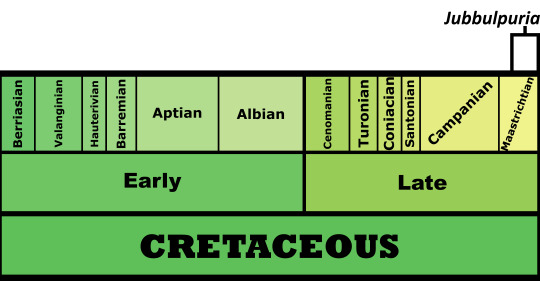
Jubbulpuria is known from the Lameta Formation of Central India

Physical Description: Jubbulpuria is a poorly known dinosaur - a dubious genus, even! - Known from only a fragment of some vertebrae. These vertebrae are poorly preserved, but they indicate Jubbulpuria was some sort of dinosaur - probably a theropod, the group of bipedal carnivorous dinosaurs from which birds evolved. The latest research on this dinosaur indicates its a Ceratosaur, the least-birdy group of theropods, and given the small size of the vertebrae it probably was a smaller one, so more likely than not, a Noasaurid - the small, slender group of Ceratosaurs. Still, without more fossils it’s difficult to say either way. It probably would have been a smaller, slenderer dinosaur, and as such, covered in protofeathers of some sort.
Diet: Jubbulpuria was probably a carnivore, though it might have also eaten fish.
Behavior: The behavior of Jubbulpuria is difficult to glean, given it is only known from limited remains that don’t indicate what kind of dinosaur it was, but it was probably a fairly active animal.

By José Carlos Cortés
Ecosystem: The Lameta Formation was a tropical lagoon environment, surrounded by dense vegetation. This plant material included a variety of algae, ferns, conifers, flowers, and - most interestingly - grass! Yup, the Lameta environment used to be one of our earliest fossil sites for grasses, indicating that grass was present and a major component of this lagoon system (though it wouldn’t have been a grassland in the modern sense). Now, of course, we’ve found more fossil evidence indicating grass evolved even earlier, and that many ornithopods were evolved to eat it; that being said, grass still didn’t become a major component of the environment until the Paleogene-Neogene transition in the Cenozoic. The grasses present in the Lameta were actually primarily kinds of rice - and were fed upon extensively by titanosaurs!
Many different kinds of animals were present in the Lameta alongside Jubbulpuria. There were snakes like Sanajeh and Madtsoia, and turtles such as Shweboemys and Carteremy. There were also a lot of fish, including sharks, in that ancient lagoon system. There were many kinds of dinosaurs as well - other smaller, slender Ceratosaurs like Jubbulpuria such as Compsosuchus, Laevisuchus, and Coeluroides; larger carnivores like the well-known abelisaurids Rajasaurus, Rahiolisaurus, and Indosuchus - and poorly known, but probably also Abelisaurids such as Lametasaurus, Indosaurus, Dryptosauroides, Ornithomimoides, and Orthogoniosaurus; giant titanosaurs such as Jainosaurus, Isisaurus, Titanosaurus, Antarctosaurus, and Laplatasaurus; and the dubious ankylosaur Brachypodosaurus! This ecosystem existed right up until the end-Cretaceous extinction, and is - indeed - an example of an environment from that ecosystem that isn’t like Late Cretaceous North America, but a whole heck of a lot weirder.
Other: Jubbulpuria may have been about 1.2 meters long, but I find that circumspect given the whole crappily known thing.
~ By Meig Dickson
Sources under the Cut
Carrano, M. T., and S. D. Sampson. 2008. The phylogeny of Ceratosauria (Dinosauria: Theropoda). Journal of Systematic Palaeontology 6(2):183-236
Carrano, M. T., M. A. Loewen, and J. J. W. Sertich. 2011. New materials of Masiakasaurus knopfleri Sampson, Carrano, and Forster, 2001, and implications for the morphology of the Noasauridae (Theropoda: Ceratosauria). Smithsonian Contributions to Paleobiology 95.
Ghosh, P., S. K. Bhattacharya, A. Sahni, R. K. Kar, D. M. Mohabey, K. Ambwani. 2003. Dinosaur coprolites from the Late Cretaceous (Maastrichtian) Lameta Formation of India: isotopic and other markers suggesting a C3 plant diet. Cretaceous Research 24 (6): 743 - 750.
Huene, F. von, 1932, Die fossile Reptil-Ordnung Saurischia, ihre Entwicklung und Geschichte: Monographien zur Geologie und Palaeontologie, 1e Serie, Heft 4, pp. 1-361
Huene, F. von, and C. A. Matley, 1933, "The Cretaceous Saurischia and Ornithischia of the Central Provinces of India", Palaeontologica Indica (New Series), Memoirs of the Geological Survey of India 21(1): 1-74
Khosla, A., K. Chin, H. Alimohammadin, D. Dutta. 2015. Ostracods, plant tissues, and other inclusions in coprolites from the Late Cretaceous Lameta Formation at Pisdura, India: Taphonomical and palaeoecological implications. Palaeogeography, Palaeoclimatology, Palaeoecology 418: 90 - 100.
Prasad, V., C.A.E. Strömberg, A.D. Leaché, B. Samant, R. Patnaik, L. Tang, D.M. Mohabey, S. Ge & A. Sahni. 2011. Late Cretaceous origin of the rice tribe provides evidence for early diversification in Poaceae. Nature Communications 2: 480.
Sharma, N., R. K. Kar, A. Agarwal, R. Kar. 2005. Fungi in dinosaurian (Isisaurus) coprolites from the Lameta Formation (Maastrichtian) and its reflection on food habit and environment. Micropaleontology 51 (1): 73 -82.
Shukla, U. K., R. Srivastava. 2008. Lizard eggs from Upper Cretaceous Lameta Formation of Jabalpur, central India, with interpretation of depositional environments of the nest-bearing horizon. Creetaceous Research 29 (4): 674 - 686.
Sonkusare, H., B. Samant, D. M. Mohabey. 2017. Microflora from sauropod coprolites and associated sediments of Late Cretaceous (Maastrichtian) Lameta Formation of Nand-Dongargaon basin, Maharashtra. Journal of the Geological Society of India 89 (4): 391 - 397.
Weishampel, David B.; Barrett, Paul M.; Coria, Rodolfo A.; Le Loueff, Jean; Xu Xing; Zhao Xijin; Sahni, Ashok; Gomani, Elizabeth M.P.; Noto, Christopher N. (2004). "Dinosaur distribution". In Weishampel, David B.; Dodson, Peter; Osmólska Halszka (eds.). The Dinosauria (2nd ed.). Berkeley: University of California Press. pp. 517–606.
#Jubbulpuria tenuis#Jubbulpuria#Ceratosaur#Dinosaur#Palaeoblr#Carnivore#Factfile#Dinosaurs#Mesozoic Monday#India and Madagascar#Cretaceous#paleontology#prehistory#prehistoric life#biology#a dinosaur a day#a-dinosaur-a-day#dinosaur of the day#dinosaur-of-the-day#science#nature
131 notes
·
View notes
Text
Rahiolisaurus gujaratensis

Source: http://rickraptor105.deviantart.com/art/Rahiolisaurus-159191388
Name: Rahiolisaurus gujaratensis
Name Meaning: Rahioli Lizard
First Described: 2010
Described By: Novas et al.
Classification: Dinosauria, Saurischia, Eusaurischia, Theropoda, Neotheropoda, Averostra, Ceratosauria, Neoceratosauria, Abelisauroidea, Abelisauria, Abelisauridae, Majungasaurinae
Rahiolisaurus was another abelisaurid from India, about 72 to 66 million years ago in the Maastrichtian stage of the Late Cretaceous. It was found in the Lameta Formation in Gujarat, India. The fossils probably come from seven different individuals and represent a variety of growth stages, though all are from the same species. It was a large abelisaurid, about 8 meters long, and it was very similar to Rajasaurus, but was overall more gracile and slender than Rajasaurus. It lived with sauropods such as Isisaurus and Lametasaurus, which Rahiolisaurus possibly hunted, especially the juvenile sauropods. It would have been possible that all the individuals buried together here had been in a group hunting together, or that there was some kind of predator trap present (such as quicksand or a tar pit.)
Sources:
http://www.prehistoric-wildlife.com/species/r/rahiolisaurus.html
http://en.wikipedia.org/wiki/Rahiolisaurus
Shout out goes to the--josh!
#rahiolisaurus#rahiolisaurus gujaratensis#rickraptor105#the--josh#dinosaur#dinosaurs#a dinosaur a day#a-dinosaur-a-day#prehistory#prehistoric life#paleontology#biology#science#dinosaur of the day#dinosaur-of-the-day#nature#factfile
40 notes
·
View notes